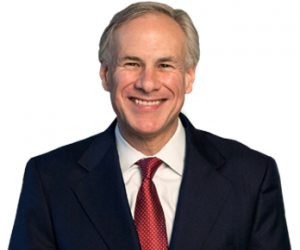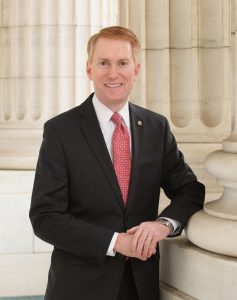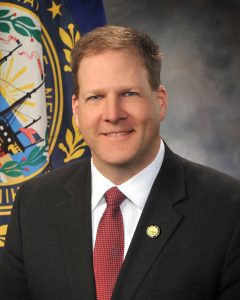By Emma Loop, Contributor. Media: Washington Examiner.
American credit card debt remains at record-breaking heights, according to fresh government data, as consumers turn to plastic amid stubbornly high prices on everyday items and housing.
U.S. credit card debt was $986 billion in the first quarter of this year, according to the latest report on household debt from the Federal Reserve Bank of New York. The balance total was the same as the previous quarter’s record high, but $145 billion more than the same time last year — a more than 17% jump.
“That the debt level remained unchanged is noteworthy since it bucks decades-long historical trends,” Matt Schulz, chief credit analyst at LendingTree, wrote recently. “This report marks the first time since 2001 in which credit card debt didn’t fall in the first quarter.”
“That lack of a decrease may not bode well for Americans’ credit card debt numbers for the rest of the year,” he added. “Thanks to rising interest rates, stubborn inflation and myriad other economic factors, it’s likely just a matter of time before credit card balances surpass $1 trillion for the first time since the New York Fed began tracking.”
Normally, credit card balances dip in the first quarter of the year, in part because people use their tax returns to make payments, according to credit reporting agency TransUnion. But its recent data also show that balances remain high, at about $917 billion, a nearly 20% hike compared to the same time last year, the company said.
“As inflation rose to near 40-year high levels, many consumers have used credit to help manage their budgets, leading to record- or near-record high balances,” Michele Raneri, vice president of U.S. research and consulting at TransUnion, said in a press release. “It remains to be seen whether these balances will continue to grow in the near-term, or if growth will slow as consumers moderate their pace of borrowing and if lenders more closely scrutinize consumers and potential risk when determining to whom they lend moving forward.”
The two reports put in stark relief the effect that persistent inflation has had on American consumers over the past year as prices for essential goods and services, such as fuel and food, surged to record highs. They also underscore the impact on everyday borrowers of the U.S. Federal Reserve’s aggressive campaign to hike interest rates to try to tame inflation and could signal a continued economic slowdown as consumers’ spending power weakens.
Combined with other types of debt, such as mortgages, auto and student loans, and retail cards, the sky-high credit card debt helped push the overall U.S. household debt balance above $17 trillion for the first time ever, according to the New York Fed’s data.
In another concerning sign, more people are starting to miss payments on their credit cards, according to the Fed’s report, released May 15. “Transition rates into early delinquency for credit cards and auto loans increased by 0.6 and 0.2 percentage points, following similarly sized increases for the past year,” the report said.
Though inflation has been moderating in recent months, prices for some things, including housing, remain historically high, further squeezing consumers’ wallets. Even before the May reports were released, the Consumer Financial Protection Bureau predicted that the national balance would continue to rise. “Given the trends for the 175 million Americans with credit cards, the CFPB estimates that outstanding credit card debt may continue to set records and could even hit $1 trillion,” CFPB Director Rohit Chopra wrote in an April blog post about proposed reforms to credit card late fees.
“High inflation is certainly contributing to Americans’ high credit card balances, along with record high interest rates,” said Ted Rossman, a credit card senior industry analyst at personal finance company Bankrate, according to CBS News. “More than a third of U.S. adults have more credit card debt than emergency savings, the highest since we started tracking this in 2011.”
Credit card balances are now also above pre-pandemic levels, Schulz said. “Even though there was no growth in the first quarter of 2023, credit card balances have risen by $130 billion since the fourth quarter of 2021,” he wrote. “Americans’ credit card debt is $59 billion higher than the record set in the fourth quarter of 2019, when balances stood at $927 billion.”
LendingTree analyzed December credit report data from more than 370,000 of its users to determine the size of consumers’ unpaid credit card balances. “Overall, the national average card debt among cardholders with unpaid balances in December 2022 was $7,279. That includes debt from bank cards and retail credit cards,” Schulz wrote.
“The four states with the highest debt are in the Northeast, while three of the four with the lowest are in the South,” Schulz said. “There are major differences in the balances at the top and bottom of our rankings, with Connecticut cardholders owing $9,408 and Kentucky’s owing $5,408. That means the average Connecticut balance is 74.0% higher than the average balance in Kentucky.”
TransUnion, for its part, found that the average credit card balance per consumer was $5,733 in this year’s first quarter. That’s more than 14% higher than the same quarter last year, when the average was $5,010.
With the Fed approving another interest rate hike earlier this month, credit card rates are now at high levels, making debt more difficult to pay down. “These increases are meant to combat the highest inflation readings in decades, so they are well-intentioned, but there are significant consequences for borrowers,” Rossman wrote in a Bankrate article after the Fed’s announcement.
“For example, the average credit card rate has risen to a record-high 20.24 percent,” Rossman wrote. “Someone with the average credit card balance ($5,805, according to TransUnion) who only makes minimum payments at 20.24 percent will be in debt for 208 months and owe $8,340 in interest. Those are staggering totals.”
“Of course, if you pay your credit card bills in full each month, your interest rate doesn’t really matter — but 46 percent of credit cardholders carry debt from month to month,” Rossman added. “And almost half of them don’t even know their interest rates.”
A recent survey from Bankrate found that as credit card balances have risen, so too has Americans’ stress around finances. In the survey, conducted in mid-April, 52% of respondents said “money has a negative impact on their mental health, up significantly from 42 percent a year ago,” the company said. “Among those who say money has a negative impact on their mental health, more than 4 in 5 (82 percent) say feelings of stress, anxiety, worrisome thoughts, loss of sleep, depression, etc., are caused by economic factors, which include inflation/rising prices (68 percent), rising interest rates (31 percent) and not having a stable income/job security (29 percent).”
Younger adults were more likely to worry about money on a daily basis, the survey found. “More than 3 in 10 millennials (38 percent) and Gen Zers (32 percent) who believe money has a negative impact on their mental health say they worry about money daily, compared to 26 percent of Gen Xers and 22 percent of baby boomers,” Bankrate said.
A previous Bankrate survey found that despite a strong labor market and pay increases, more than half of Americans said wage growth hasn’t kept up with inflation.
Rossman, in his recent Bankrate article, said one way to tackle credit card debt is to get a balance transfer card with an introductory 0% annual percentage rate. “These allow you to move your existing high-cost credit card debt over to a new card with an interest-free term lasting as long as 21 months,” he wrote.
“If you can’t qualify for a balance transfer card — lenders are generally looking for good to excellent credit — then nonprofit credit counseling might be your best option,” he said. “Reputable agencies such as Money Management International offer debt management plans along the lines of a 7 or 8 percent interest rate over four or five years. They negotiate better terms with your creditors and walk you through the process.”
Moreover, Rossman says to consider starting a side hustle, selling things you no longer need, or trimming expenses to generate extra cash for car payments.
Schulz, the LendingTree analyst, also recommends contacting the credit card company to ask for a lower interest rate, citing a survey that found more than 75% of those who asked received a lower rate.
“It’s absolutely, positively worth your time to call your credit card issuer and ask them for help,” he wrote last month. “Whether you’re asking for a lower interest rate, a waived late fee, annual fee or balance transfer fee, a higher credit limit or any other improvements on your credit card terms, your chances of success are likely better than you think.”




























































































Discussion about this post